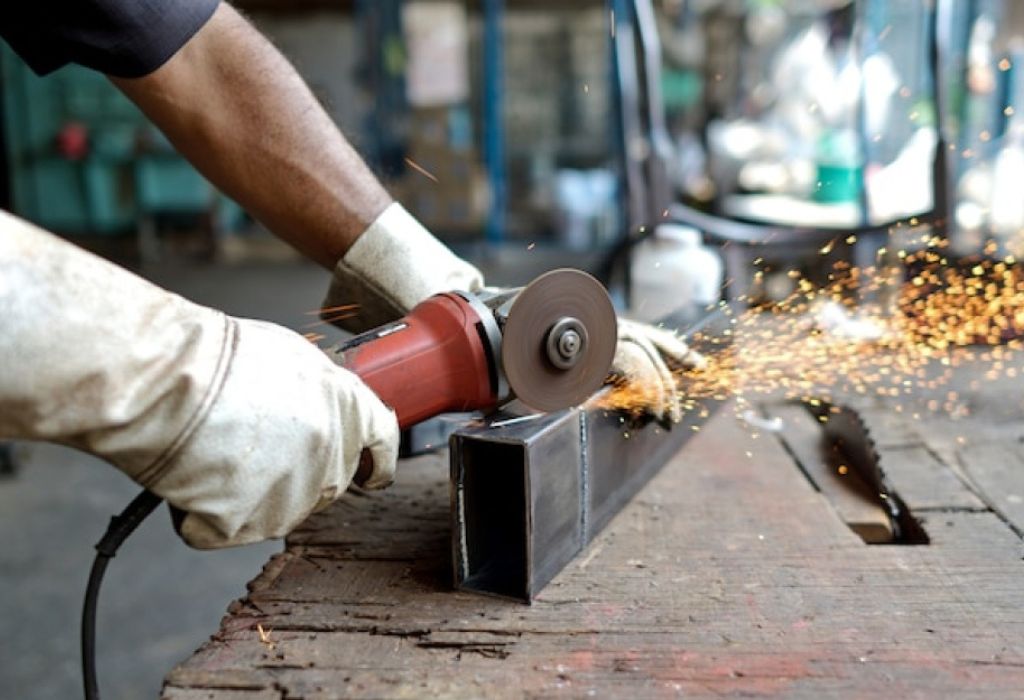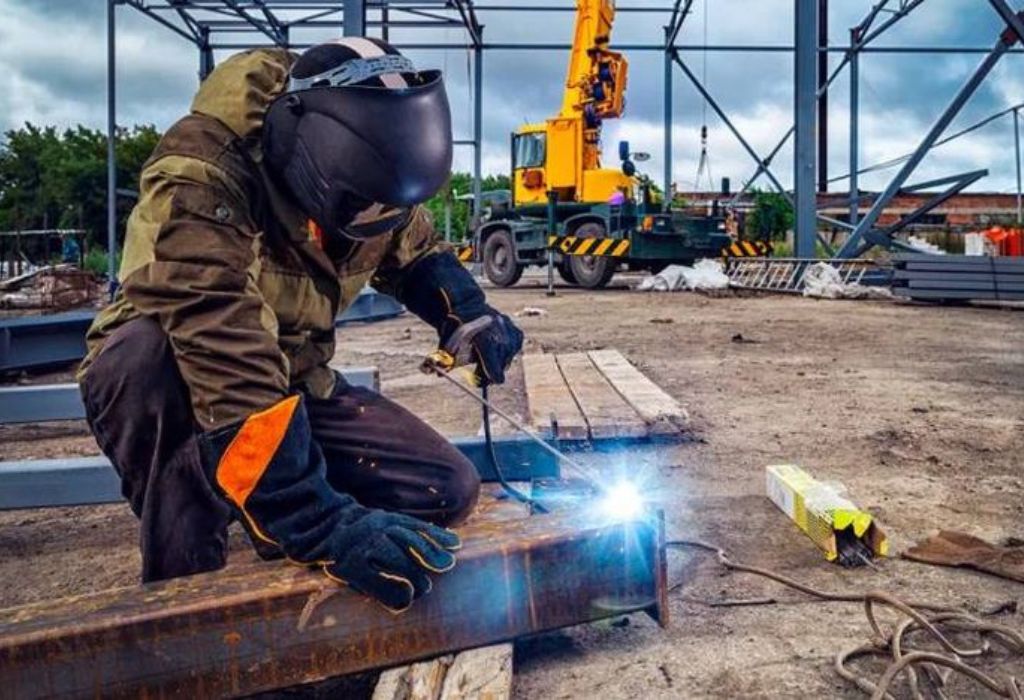Imagine walking into a tool store, surrounded by glowing displays of welding machines.
Some cost under $300, while others stretch beyond $4,000 — leaving you wondering what justifies the price difference.
It’s a common dilemma for beginners and professionals alike. You search online for how much is a welding machine, only to find confusing numbers and endless options.
Some guides focus on hobbyist tools, while others compare heavy-duty industrial welders without context.
The truth is that welding machine prices vary based on type, power, and purpose.
A small stick welder for DIY repairs costs much less than a TIG welder used for aerospace fabrication.
According to Home Depot’s current listings, welding machines range from $250 to over $5,000 depending on process and amperage (Home Depot).
In this guide, you’ll discover the real-world price breakdown — what affects the cost, how to choose the right welder for your needs, and which models deliver the best value for your money.
Whether you’re a hobbyist or setting up a workshop, this guide will help you confidently budget your next purchase.
Quick Answer — Typical Price Ranges by Welder Type

Welding machines come in several types, each suited for different materials and skill levels. Prices depend heavily on process type, amperage range, duty cycle, and features.
- Stick (SMAW): $200–$500 for beginners, up to $3,000 for industrial use.
- MIG/Flux-core (GMAW/FCAW): $250–$900 entry-level, $1,000–$2,000 midrange, $2,000–$4,500 professional.
- TIG (GTAW): $1,000–$2,500 base units, up to $6,000+ for AC/DC professional models.
- Multi-process: $500–$1,500 for hobbyists, $1,600–$4,000 for shop-grade performance.
What’s the cheapest type of welding machine?
Stick welders are the most affordable, ideal for light steel repairs and farm use.
Why are TIG welders more expensive?
They require AC/DC control, high-frequency start, and precise arc stability, especially for aluminum.
Is a multi-process welder worth the investment?
Yes, if you handle various projects — it saves money compared to buying multiple machines.
Do brand names affect price?
Absolutely. Premium brands like Miller, Lincoln, and ESAB charge more but offer longer lifespans and warranty support.
What Drives the Price of a Welding Machine?
The cost isn’t random — it’s shaped by technology, performance, and construction. Understanding what adds value helps you make smarter buying decisions.
1. Amperage & Duty Cycle
The higher the amperage and duty cycle, the more expensive the welder. Machines designed for continuous industrial use must withstand heat and maintain power efficiency.
Does higher amperage always mean better quality?
Not always. Choose amperage based on the thickness of metal you weld. For most home users, 120–140 amps is enough.
What is a good duty cycle for hobbyists?
A 20–30% duty cycle is sufficient for occasional use. Professional welders prefer 40–60% or higher.
2. Inverter vs Transformer Technology
Modern inverter welders are compact, efficient, and deliver cleaner arcs than older transformer models. However, advanced circuitry increases price.
Are inverter welders worth it?
Yes — they’re lighter, energy-efficient, and often include digital controls and multiple welding modes.
3. AC/DC and Pulse Capabilities
For TIG welders, AC/DC modes are crucial for working with different metals.
Aluminum requires alternating current, while steel benefits from DC. Pulse control adds precision — but at a cost.
Why does AC/DC make TIG welders expensive?
It involves complex electronics to switch current polarity smoothly, improving weld quality on aluminum.
4. Dual Voltage Flexibility (120/240V)
Many welders now offer dual voltage to work on both household and shop power supplies.
Is dual voltage worth paying extra for?
Yes, if you move between home and worksites — it provides maximum versatility.
5. Advanced Features
Digital displays, automatic arc stabilization, thermal overload protection, and spool gun compatibility all add value — and cost.
Do features like LCD panels matter?
They improve precision, convenience, and setup time — great for professionals who value efficiency.
Real-World Welding Machine Prices
To give you a clear reference, here are current market prices for popular welding machines from leading brands:
| Welding Type | Model | Average Price | Notes |
| MIG | Miller Millermatic 211 | ~$1,975 | Dual-voltage, auto-set, pro use |
| TIG | Lincoln Square Wave 205 | ~$1,529–$2,779 | AC/DC, digital control, aluminum ready |
| Multi-Process | YesWelder MP200 | ~$849 | Budget-friendly, 5-in-1 versatility |
| Stick | Hobart Stickmate 160i | ~$399 | Lightweight inverter for beginners |
| TIG | Everlast PowerTIG 210EXT | ~$1,899 | Pulse control, water-cooler ready |
Are cheap welders reliable?
Yes, for occasional use. Many entry-level flux-core or stick welders under $300 perform well for basic steel jobs.
Why do prices vary for the same model?
Retailer bundles, added accessories, and promotions cause variation.
Is buying used equipment smart?
Yes, if the machine is lightly used and comes from a reputable source. Always inspect leads, torch condition, and internal wiring.
The True Cost of Welding — Beyond the Machine

Buying the welder itself is only half the story. Every setup includes essential accessories and recurring expenses that add to your total cost of ownership.
1. Accessories and Setup
You’ll need a helmet, gloves, apron, wire, rods, clamps, and a cart. MIG and TIG users also need gas regulators and cylinders.
How much extra should you budget?
Expect $300–$800 in setup costs depending on your gear quality.
What’s the biggest ongoing expense?
Shielding gas and consumables like tips, nozzles, filler rods, and grinding wheels.
Should you rent or own gas cylinders?
Renting works for occasional welders, but ownership saves money for frequent use.
2. Maintenance and Repairs
Like any machine, welders require periodic cleaning, torch replacement, and cable checks.
How long does a good welder last?
With proper care, 5–10 years or more — especially from reputable brands.
Do inverter welders cost more to repair?
Yes, but they are usually more energy-efficient and feature-rich.
Choosing the Right Welder for Your Needs
Price alone shouldn’t decide your purchase — your welding goals should.
1. DIY and Home Projects
If you’re welding garden tools or thin metal sheets, a flux-core or stick welder between $200–$400 is perfect.
Can a cheap welder handle car repairs?
Yes, but choose a MIG model with at least 140 amps for auto body panels.
2. Professional or Industrial Use
For long hours and thick materials, choose MIG or TIG machines with high duty cycles and dual voltage.
What’s the best value for small fabrication shops?
A multi-process welder under $2,000 covers most needs.
3. Specialty Welding
If you work with aluminum, stainless steel, or titanium, invest in a TIG machine with AC/DC and pulse functions.
Why does aluminum require TIG?
Because it demands precise heat control and clean welds — only achievable with AC TIG.
Brand Tiers and Value
Not all welders are priced equally — brand reputation, warranty, and build quality play a big role.
| Tier | Brand Examples | Typical Price | Best For |
| Premium | Miller, Lincoln Electric, ESAB | $1,500–$6,000+ | Industrial use, reliability |
| Mid-Range | Everlast, Hobart, AHP | $600–$2,000 | Small shops and prosumers |
| Budget | YesWelder, ARCCAPTAIN, Vevor | $200–$800 | Beginners and light use |
Are premium welders worth it?
Yes, for professionals who value uptime, service, and long-term reliability.
Do budget welders perform well?
Surprisingly yes, for hobby use. They’re often built with inverter technology and perform decently for light work.
Does warranty matter?
Absolutely — premium brands offer 3–5 year warranties, ensuring replacement parts and service availability.
Where to Buy a Welding Machine

Knowing where to buy can save hundreds of dollars.
- Home Depot / Lowe’s: Great for beginners and financing options.
- Welding Supply Stores: Offer expert advice and local support.
- Online Retailers (Amazon, YesWelder, Weldersupply): Frequent sales and bundled accessories.
- Used Market (eBay, Facebook Marketplace): Cheaper, but always test before purchase.
When is the best time to buy?
During holiday sales (Black Friday, Labor Day, or model clearance events).
Should you buy online or in-store?
Online offers better prices, but local stores provide personalized help and warranty service.
Is financing available?
Yes — most major retailers and manufacturers offer monthly payment plans.
Future Price Trends in Welding Machines
Welding technology continues to evolve, and prices are shifting accordingly.
Are welders getting cheaper?
Yes, thanks to inverter technology and mass production, features once exclusive to premium models now appear in mid-range machines.
Will automation affect costs?
AI-assisted controls and robotic welding systems are reducing labor but increasing precision — slightly raising professional machine prices.
What about battery-powered or portable welders?
These are emerging trends, with lightweight models under 20 lbs ideal for mobile repair work.
Will TIG and MIG prices drop in the future?
Gradually — as inverter tech becomes standard, expect 10–20% lower prices in the next few years.
Conclusion
So, how much is a welding machine?
It depends entirely on your needs.
A beginner-friendly stick welder can cost as little as $200, while professional TIG and multi-process machines can exceed $5,000. Factors like amperage, duty cycle, features, and brand reputation determine the final price tag.
If you’re just starting out, don’t overspend — invest in a durable mid-range machine and upgrade as your skills grow. Professionals, however, should prioritize reliability, safety, and long-term performance over initial cost.
At the end of the day, the best welding machine isn’t the most expensive one — it’s the one that perfectly matches your projects, materials, and frequency of use.

I’m Darrell Julian, the founder, lead writer, and hands-on welding enthusiast behind ArcWeldingPro.com. With more than 15 years of real-world welding experience, I created this platform to share what I’ve learned in the field, in the shop, and in the heat of the arc.


